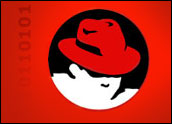
Red Hat has signed a pair of agreements with Sun Microsystems that will help put the open source company on the fast track to delivering a more complete end-to-end application development and runtime stack for its Red Hat Enterprise Linux customers.
Red Hat has been heading in this direction for a while now — its acquisition of JBoss in 2006 brought the company an open source Java application server, a portal platform, along with a variety of JBoss middleware and expertise.
Red Hat signed Sun’s broad contributor agreement, which covers participation in all Sun-led open source projects by all Red Hat engineers, Red Hat announced Monday. In addition, Red Hat has signed Sun’s OpenJDK Community TCK License Agreement, which gives Red Hat access to the test suite that determines whether an implementation of the Java Platform Standard Edition (Java SE) that is derived from the OpenJDK project complies with the Java SE 6 specification.
Java SE, previously known as “Java 2 Platform, Standard Edition,” or “J2SE,” is widely used for delivering Java applications for general use. It’s distinguished from Java EE (Enterprise Edition), which is also widely referred to as J2EE and is used for programming Java server-based applications. Java ME (Micro Edition) is a Java specification for use in small devices like cell phones.
First to License Java SE TCK
Red Hat is the first major software vendor to license the Java SE Technology Compatibility Kit (TCK), in support of Java SE compatibility. To help foster innovation and advancement of the Java technology ecosystem, Red Hat says it will also share its developers’ contributions with Sun as part of the OpenJDK community. These agreements pave the way for Red Hat to create a fully compatible, open source Java Development Kit (JDK) for Red Hat Enterprise Linux, the company said, including the Java Runtime Environment (JRE).
Basically, Red Hat will gain full access to the OpenJDK code base, as well as the Java SE 6 TCK, which Red Hat will use to help it develop a JRE optimized for Red Hat Enterprise Linux and its JBoss Enterprise Middleware.
One-Stop Shop?
Red Hat’s application development and deployment efforts seem to be changing the scope of the company’s offerings in a significant way. Red Hat customers in the future may be able to acquire everything they need to build and deploy Java applications running on Linux rather than cobbling together solutions from disparate sources to create a working stack of applications, servers, middleware, and, of course, the Linux operating system.
“I think that’s clearly the way that Red Hat is progressing — they’re almost a post-Linux company in that respect,” Stephen O’Grady, an industry analyst for RedMonk, told LinuxInsider.
“What will be interesting to see is how well they navigate that transition, because they’ll increasingly be competing with full stack players that were also one-time close partners,” he added. “Plus, it’s a very different — and more complicated — sale.”
Open source solutions may be a cultural fit for Red Hat, but is the company’s latest Java effort more important than an evolution of customer interest?
“I think Red Hat believes complete solution stacks are the clearest path to growth — that to increase their market share they need to capture a bigger share of the enterprise budget,” O’Grady noted.



















































